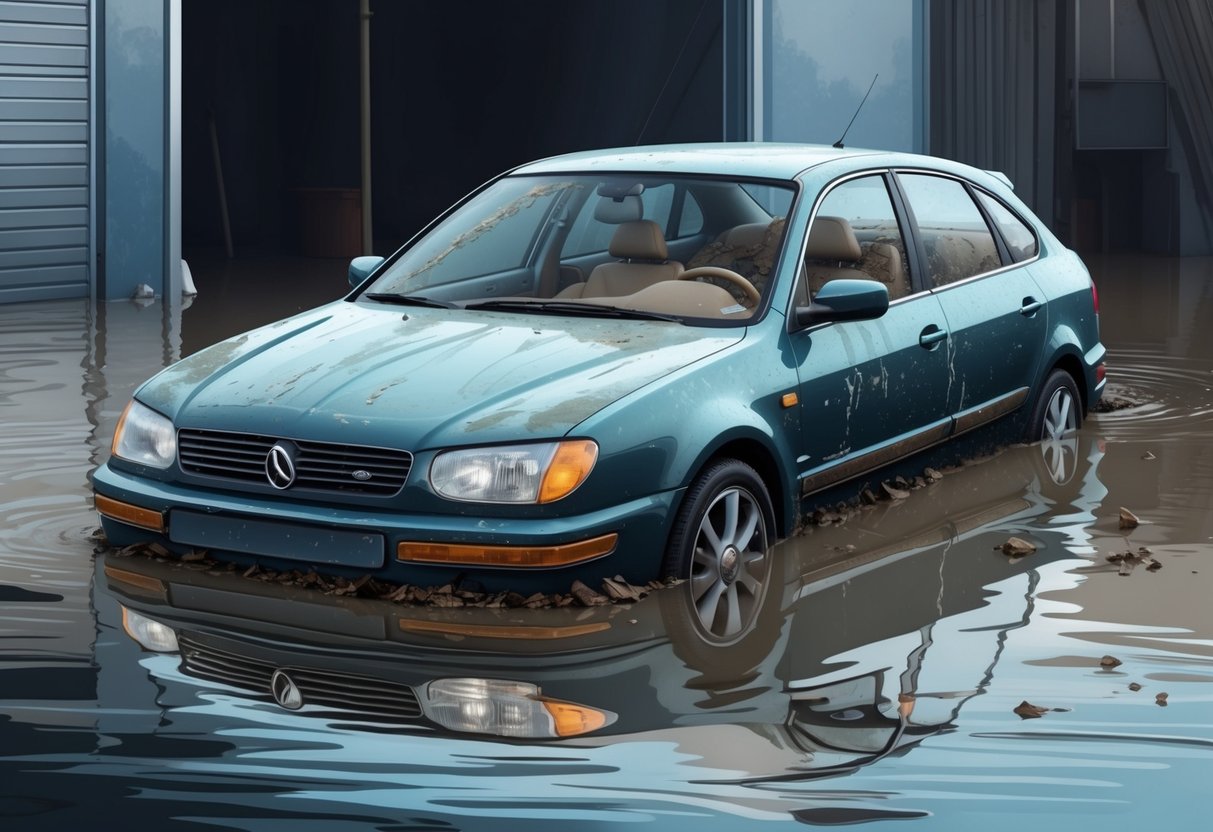
Buying a used car can be stressful, especially with the increasing risk of unknowingly purchasing a flood-damaged vehicle. Water damage isn’t always obvious, and it can cause long-term problems like electrical failures, mold, and corrosion.
There are several reliable methods shoppers can use to identify signs of flood damage before committing to a purchase. These include looking for a musty odor, inspecting for mismatched or loose carpeting, and checking for rust in hidden areas such as around doors, inside the trunk, and under the hood.
Details like lingering moisture in hard-to-reach places, water lines in the engine bay, or fogged headlights can also indicate problems that many sellers might try to hide. More tips are available in guides like this Consumer Reports article on spotting flood-damaged cars.
Understanding Flood Damage in Cars
Flood damage in vehicles often goes unnoticed until mechanical or electrical issues appear. Damage from water can significantly affect a car’s safety, resale value, and reliability.
It is crucial to identify how flooding happens, the extent of water intrusion, and what it means for the car’s future.
Definition of Flood Damage
A flood-damaged vehicle is any car exposed to rising water, often from hurricanes, storms, or flash floods. Flood damage occurs when water enters the cabin, engine, or trunk, affecting internal systems and upholstery.
Even if the water recedes quickly, the car’s electrical components, wiring, and onboard computers are at risk. Insurance and state laws often categorize these vehicles as “salvage” or “flood” if the cost to repair exceeds a particular threshold.
In many cases, the vehicle title will be marked accordingly, though not all flood-damaged cars are reported or properly identified. It’s important for buyers to check a car’s title history and consider independent inspections to catch any overlooked signs.
Types of Water Damage
Not all water damage is equal. Freshwater flooding from rain or rivers can destroy interiors, short out electrical systems, and cause mold growth.
Saltwater flooding—often from coastal storms—can cause even more severe corrosion to metal parts, wiring, and connectors. Water often seeps beyond visible surfaces into insulation, carpet padding, and the hollow areas inside doors and panels.
Advanced cases may involve hidden rust or mineral deposits in the engine bay, battery compartment, or undercarriage. Persistent moisture conditions can also foster mold and mildew, leading to long-term odors and health risks.
For more tips on inspection, see these ways to spot flood-damaged cars.
Impact on Vehicle Longevity
Flood-damaged vehicles have a shorter lifespan due to accelerated wear on crucial components. Electrical systems are particularly vulnerable; corrosion can develop inside wire harnesses, sensors, and modules, often causing delayed failures or costly repairs.
Mechanical parts like the engine, transmission, and brakes are also affected. Water in the lubrication system can lead to early engine wear and internal rust.
Mold and mildew in the interior can sometimes be cleaned, but lingering moisture can cause persistent problems with upholstery and air quality. Prospective buyers should note that flood-damaged cars may have ongoing maintenance challenges and lower resale values.
Why Flood-Damaged Cars Are Sold
Flood-damaged cars often reenter the used car marketplace through various channels. Buyers need to understand how these vehicles are resold, the risks involved, and the role that auctions play in distributing them.
Common Reselling Methods
Sellers often use several methods to resell flood-damaged vehicles. A common practice is cleaning and repairing the car to mask obvious signs of water damage, such as musty odors, water stains, and corrosion.
Unscrupulous dealers may change the carpets, detail the interior, or replace damaged electronics. Cars that have been declared a total loss by an insurance company are issued a salvage title.
However, some sellers engage in “title washing,” in which vehicles are retitled in different states to either remove or disguise the salvage title and present it as a clean title. This makes it hard for buyers to identify the car’s true history.
Documentation and vehicle history reports can sometimes fail to reveal flood incidents, increasing the risk for buyers.
Risks of Buying Unknowingly
Purchasing a flood-damaged car without knowing exposes the new owner to significant mechanical and financial risks. Electrical systems, airbags, sensors, and onboard computers are particularly vulnerable to water exposure, and failures might not show up until weeks or months after the purchase.
These vehicles may develop mold, corrosion, and persistent mechanical issues that are expensive to repair and lower the car’s resale value. Insurance policies may not cover pre-existing flood damage, leading to costly out-of-pocket repairs.
Buyers can minimize risk by carefully reviewing documents, inspecting for moisture or rust, and checking for water lines in hidden areas. Professionals recommend being vigilant for musty smells, fogged lights, and unevenly faded upholstery, all factors cited by experts at Edmunds.
Role of Auctions
Auto auctions are a major way flood-damaged and salvaged vehicles are reintroduced into the market. Insurance companies typically sell declared total loss flood cars at salvage auctions, where the title often indicates the nature of the damage.
At these auctions, buyers—frequently dealers or rebuilders—purchase damaged vehicles at low prices with the intent to repair and resell. While some buyers use these cars for parts or honest resale with full disclosure, others may attempt to restore and sell them without informing future buyers about the flood history.
The use of salvage titles provides some transparency, but title washing and inconsistent regulations between states can make these safety nets unreliable. Knowing how vehicle histories are handled at auction can help buyers avoid purchasing a risky car—from a process outlined by Consumer Reports.